- Home
- Mary Roach
Spook: Science Tackles the Afterlife Page 13
Spook: Science Tackles the Afterlife Read online
Page 13
The reverend concluded with some “scattered facts about the future,” including one that suggests he might have sat down and enjoyed Arthur Findlay’s company: “Flowers do not fade. They melt and disappear.” The article concludes, somewhat abruptly, with the statement, “We keep our mannerisms.”
If that is so, then somewhere, eons from now, Gary Schwartz will be smoothing the tip of his tie over his belly and jingling the change in his pockets. Pacing while he talks. And laughing. Laughing easily, laughing loud, laughing a lot. If the skeptics get under his skin—and I’m sure that they do—he doesn’t let it dampen the obvious fun he is having with his work. For a man who takes an extraordinary amount of professional guff, he is resiliently good-natured, a Pooh bear among the skeptic society Eeyores.
Shortly after Schwartz’s paper detailing the Afterlife Experiments findings ran in the Journal of the Society for Psychical Research, University of Oregon Professor Emeritus of Psychology Ray Hyman published a piece in the Skeptical Inquirer entitled “How Not to Test Mediums.” The article featured a laundry list of criticisms of Schwartz’s methodology. The most damning of these, to my mind anyway, concerned rater bias: Schwartz’s sitters had been allowed to rate the readings, and they knew which one had been their own. This is a serious and long-acknowledged bugaboo in research that aims to test mediums and psychics. One of the first researchers to document rater bias among mediums’ sitters was a London University Ph.D. candidate named John Hettinger. His project, carried out in the late 1930s, is detailed in parapsychologist Sybo Schouten’s excellent “Overview of Quantitatively Evaluated Studies with Mediums and Psychics” in the July 1994 Journal of the American Society for Psychical Research. Hettinger found that subjects’ judgments of the accuracy of mediums’ statements pertaining to their dead loved ones were strongly influenced by their knowing whether or not the statements were intended for them. Cut out the horoscopes in the next astrology column you see, remove the star signs at the top, and mix them up. You’ll likely find that yours doesn’t stand out the way it usually seems to.
Hyman describes having been a pawn of the phenomenon himself. In his teens, he had earned spending money by reading palms. He started doing it on a lark, and was surprised by his clients’ enthusiastic praises of his talents—so much so that he himself began to believe he had a gift. Eventually a friend persuaded him to try an experiment in which he would deliberately read a client’s palm exactly opposite to what the lines on her palm suggested. The client told Hyman it was the most accurate reading she had ever had.
Schwartz’s follow-up study addressed Hyman’s complaints. It was, as Hyman himself described it, “admirably simple and well controlled.” In this study, Schwartz tested one medium only—Laurie Campbell, from Los Angeles. Campbell traveled to the Human Energy Systems Laboratory, where she gave telephone readings for six unidentified sitters. Campbell’s phone was on mute, so the sitters could not hear their readings; they simply sat quietly, as though on hold. The sitters were then mailed transcripts of two readings: their own (obviously not identified as such) and that of the other sitter called that day. The sitters were asked to rate the material in two ways. First, they were asked to rate each statement in the two readings as “hit,” “miss,” or “questionable.” They were also asked to circle “dazzle shots”—described as statements that made them go, Wow.
Overall, the data were not dazzling. The percentage of hits among sitters’ own readings was not significantly higher than among control readings. When Schwartz analyzed the dazzle-shot data, he reported “no evidence of anomalous information transfer.” In other words, there was no statistically significant evidence that the medium was receiving information from the sitters’ dead loved ones. This falls well in line with medium studies that have come before. “Where results turned out to be significant, they were often marginal and not impressive,” concluded Schouten. “Even with a star subject…most experiments failed.”
Schwartz did not consider the experiment a failure. He chose to focus on one reading in particular, that of a sitter named George Dalzell (who has since gone on to become a medium himself). Campbell’s reading of Dalzell was judged—by Dalzell, though without knowing it was his—to be sixty percent accurate. Hyman suggested that Dalzell could simply be one of those sitters who tend to interpret most statements made by a medium as relevant or accurate. British psychiatrist and SPR officer Donald West did a two-year study of mediums and was amazed by the different rating styles of subjects. Some saw relevance in nearly everything the medium said, whereas others tended to dismiss almost all statements as inaccurate or meaningless.
Hyman complained that Schwartz’s highlighting of just one reading reduces research to anecdote. But perhaps mediumship shouldn’t be judged under the harsh lights of statistics and on-demand laboratory performance. If paranormal insights occur rarely, and largely outside of voluntary control, then perhaps it makes sense to focus on isolated moments—when the energy is right, whatever that might mean, and the medium is in fine fettle. But if this is the case, I think you have to wave good-bye to ever achieving “proof”—at least the kind that will stand up, statistically and methodologically, to the standards of peer review and academic orthodoxy. Medium research will become qualitative, not quantitative.
As is about to happen this afternoon, in Schwartz’s lab. The discarnate who will be asked questions via Allison DuBois today is Monty Keen, a British colleague of Schwartz’s who collapsed and died of a heart attack the previous month while arguing with a skeptic about telepathy at a panel in London. After DuBois finishes a blind reading for Keen—whose identity is not known to her and whom she has never met—and answers the formal afterlife questions for Beischel, Schwartz is going to chime in with some off-the-cuff postexperimental questions of his own. (Meaning, basically, that it won’t be done in a manner that will satisfy Ray Hyman.) Schwartz is gathering material for a presentation he plans to make at an SPR tribute to Monty Keen being held in London the following month. He hopes to liven up his tribute speech with some appropriate quotes from Monty on the subject of life in the hereafter—from a resident’s perspective. He also hopes to obtain so-called veridical information from DuBois—statements that would prove, or at least strongly suggest, that it is truly Monty Keen communicating.
IF YOU REALLY wanted, as a discarnate being, to prove that it was you coming through—and not some product of a medium’s imagination or subconscious—you could try to communicate the key to an encoded message. This would, of course, entail some setup while you’re alive. You’d need to come up with a message, encode it, and then give the encoded gibberish to your friends and tell them what you’re up to. After you die, you would then try to transmit the key word that decodes it. Of course, this assumes at least a passing familiarity with cryptography, and rare is the paranormal enthusiast who holds this sort of expertise.
Rare, but not unheard of. In 1946, Robert Thouless, a former president of the SPR, encoded two passages and published them in the society’s Proceedings, along with an explanation of his intent and an invitation to encryption experts to try to break the codes while he was still alive, to ensure they were foolproof. A cryptographer quickly managed to decipher the first message, leading Thouless to seek the man’s aid in coming up with an “unbreakable” code as an additional message. Thouless died in 1984, and the Thouless Project, headed up by emeritus University of Virginia professor Ian Stevenson, was born. Stevenson received some one hundred usable responses from people who had heard about the coded messages and had sat with a medium who believed he or she had discerned one or both of the keys. The keys were run through a computer program, along with an additional eighty variations on those responses. There is, of course, an avenue for fraud, as Thouless could have simply—were his intent not to solve the mystery of life after death, but to persuade people that it exists—told the key word to a medium before he died. Thouless addressed this in his article as best he could, stating, “I happen to be an honest man.
” I happen to believe him, for all decoded sequences have amounted to, to quote one Thouless Project report, “a meaningless jumble of letters.”
Thouless himself had pointed out one obvious potential obstacle to the success of such tests, and that is that “the communicator is suffering from the disadvantage that he can no longer have the use of his material brain.” Perhaps our memory disappears along with our neurons. Indeed, in 1986, honorary SPR secretary Mr. A. T. Oram reported to the society that he had made contact with Thouless via no less than eight different mediums and that “it seems he cannot remember the keys.”
Low-tech renditions of this type of experiment have involved messages in sealed envelopes left in bank vaults and then opened after the message-writer’s death and upon consulting mediums as to the content of the message. SPR cofounder F. W. H. Myers penned one such message, which British physicist and spiritualist Sir Oliver Lodge opened fourteen years after F. W. H.’s death, upon hearing from an overconfident medium in his acquaintance that she was certain she had received the message. The experiment, to quote Lodge’s 1905 writeup in the SPR’s journal, “completely failed.”
As did later efforts to solve the Oliver Lodge Posthumous Test, consisting of a sealed packet (the Oliver Lodge Posthumous Packet) comprising seven envelopes each inside the next, a veritable filo dough of envelopes, with the late Sir Oliver’s message inside the innermost. Following Lodge’s death in 1940, a six-party committee (the Oliver Lodge Posthumous Test Committee) was convened and some 130 sittings with various mediums were held. Owing to the arcane complexities of Lodge’s test, the proceedings quickly deteriorated into procedural bickering. All six outer envelopes held obscure clues intended to jog Lodge’s memory but tending to give away aspects of the final message, which turned out to be a musical fragment tapped out on Lodge’s fingers. You can’t blame the mediums for being exasperated. Here, for instance, is the text of Sir Oliver’s note in Envelope #3: “If I give a number of 5 digits it may be correct, but I may say something about 2 8 0 1 and that will mean that I am on the scent. It is not the real number…but it has some connection with it. In fact it is a factor of it.” The flummoxed committee attempted to summarize four mediums’ disappointing efforts, concluding weakly that it was best to “leave it to each reader to make his own evaluation.” This reader’s evaluation is that Sir Oliver was possibly a few envelopes short of a stationery set.
A macabre variation on the posthumous test was undertaken in 1921 by Thomas Lynn Bradford, variously described as an electrical engineer, a dramatic and humorous reciter, and a psychic investigator. (Bradford apparently excelled at none of these pursuits, for his entire estate at the time of his death consisted of five cents, some pawnshop tickets, three cheap watches, and several books on spiritualism.) According to a front-page story in the New York Times, Bradford had run an ad in a Detroit newspaper seeking to meet with others who were interested in the subject of “whether the dead can communicate with the living.” A Mrs. Ruth Doran responded. The two met and agreed that, as the Times put it, “there was but one way to solve the mystery—two minds properly attuned, one of which must shed its earthly mantle.”
Unlike Thouless and his ilk, Bradford was unwilling to wait around for natural causes to remove his mantle. He shed it that very night, by turning on the gas in his rented room. He was found that evening by his landlord, a Mr. Marcotte, who sat down with the police and told them what he knew about Bradford. This amounted to two colorfully disparate facts: “Mr. Marcotte says that in his younger days [Bradford] was a star athlete and was a champion pole vaulter of the Detroit Athletic Club. He would often put on a frock coat and impersonate Dr. Jekyll and Mr. Hyde.” Though the juxtaposition is no doubt the result of hurried editing, I have chosen to believe that the impersonations were carried out while, rather than in addition to, pole vaulting.
The Times followed up with a much shorter piece the next day, headlined, “Dead Spiritualist Silent.”
ALLISON DUBOIS IS seated in a striped armchair in one of the four rooms that make up the Human Energy Systems Laboratory. (At the time I visited, the lab was a converted two-bedroom stucco house owned by the university; it has since moved to a twenty-room suite near the medical school.) Schwartz and Beischel sit in matching armchairs behind DuBois, so their expressions can’t be seen by the medium. On a wall is a placard with the Human Energy Systems Laboratory logo: a heart, a rainbow, and a human form with its arms outstretched, expressing love or joy or the size of the fish he caught, as people seem to do on New Age book covers. We’ve reached the postexperimental phase, where Schwartz is going to ask Keen, via DuBois, some questions of his own.
Schwartz’s questions are paced and deliberate, adding an air of suspense to the room and making DuBois knit her brow. “Does this person…have…a message he’d like conveyed to his wife?” DuBois crosses and uncrosses her bone-china ankles. The air conditioner breathes.
“She’s got new curtains.”
Schwartz blinks in his seat. He’s the boy who wanted trucks and got a chemistry set. “Mmm. Can he show us—”
DuBois cuts him off. Abruptly and with seeming certainty, she says: “He went down at a podium…. Like…” She snapsher fingers. “He falls, he goes down at a podium. Like an assembly. And he goes down at a podium. Is that odd? That’s what he’s showing. The man that died at the podium.”
This is what Schwartz means by a dazzle shot. In my head, I did in fact go, Wow. Its dazzle is dimmed slightly by Schwartz having at one point asked DuBois whether the discarnate had “communicated to anyone else activities related to this research project,” which affords a hint that the mystery entity might have been a fellow researcher. And if DuBois had heard about Keen’s untimely and public death—which was the talk of the paranormal community a couple months back (even I had heard about it)—it might, at this point, have come to mind. Still, the suddenness and sureness of her statements don’t jibe with a hunch or a fishing trip.
But what about all the statements that didn’t seem to fit with Keen? Schwartz says it’s possible that multiple discarnates come through when a medium opens up the channels; “crosstalk” is the official lingo they use. (“Fudge factor” is lingo I might use.) So it’s up to the sitter, then, to pick out what’s meant for him or her, and disregard the rest.
Or to interpret the statements more loosely. Take, as an example, some of the things DuBois said about my mother. Just before she began the Keen reading, DuBois stopped the proceedings to say that she was concerned that she might be getting crosstalk from my mother and from the father of a cameraman who was shooting the proceedings for a documentary. Both of whom are in fact dead. I later asked her what else she could tell me.
The reading was a more or less even mix of hits and misses, with many of the hits being things that would fit a sizable percentage of the population (e.g., a cat in a sunny window, family gatherings being important). What I found most striking about the reading was the difference between my reactions to her statements and Schwartz’s reactions. DuBois at one point said she was getting the letter K as being connected to my mother. “I don’t know if she means the initial K, like Katherine or Kaye, but she’s referencing K as connected to her,” was what DuBois said. I drew a blank. My middle name is Catherine, but K seemed to be what the alleged discarnate was trying to put across. DuBois came back to the K again later in the reading. She seemed insistent. Finally I said, “Well, my middle name is Catherine, but…” Schwartz guffawed. “You are such a jerk! You expect it to be precise!”
But “Catherine” wasn’t what came through, I protested. It was K. This sort of thing happened a few times. DuBois reported that my mother was making reference to “the man that still has the ring on his finger for her.” This meant nothing to me, as my father never wore a wedding ring, or any ring at all. I mentioned that I wear her wedding ring, but since the statement was about a man, not a ring, I didn’t think it was relevant. Here again, they felt I was being too picky. Was I? Was I being too
literal, too negative? Or does Schwartz give his mediums too much latitude?
I was leaning toward the latter, when my own personal dazzle shot showed up. My reading was over and I was quibbling with Schwartz about something, when DuBois interjected, “I’m showing a metal hourglass, that you turn over. Does your brother have one?”
My brother collects hourglasses. (And here Schwartz nearly fell off his chair.) I was impressed, not only by its accuracy, but by its specificity and obscurity and by the sudden, assured declarativeness with which DuBois said it. It’s hard to dismiss it. Yet it is equally hard, for me anyway, to dismiss all the statements that clearly did not fit my mother’s life.
Here is the funny thing. Both Gary Schwartz and I believe ourselves to be neutral, unbiased inhabitors of the middle ground. I think Schwartz falls short of that territory, and he feels the same way about me. And he may be right about me. I am skeptical by nature.
I’m going to act contrary to my character and allow for the possibility that the other things DuBois was getting were, as they say, crosstalk. Maybe that was my mother coming through. But what’s the meaning of it? Why would one of my brother’s hourglasses be the image she chose to present to me? Was she simply trying to prove she was there? Then why not deliver my birth date or the name of our street or any of a thousand things that would more clearly suggest to me that it was her?
Maybe if I understood the mental processes of mediumship—the methods and limitations of spirit communication—I could answer these questions for us. This was what I was thinking when I committed the bold and ridiculous act of signing up for “Fundamentals of Mediumship,” a three-day course at England’s ancient and stately Arthur Findlay College.

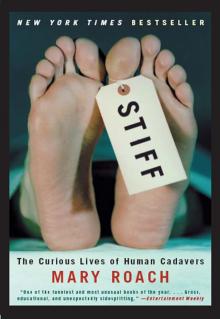 Stiff
Stiff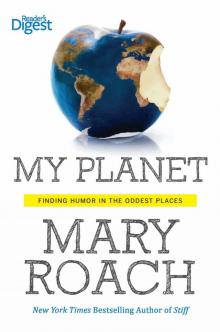 My Planet: Finding Humor in the Oddest Places
My Planet: Finding Humor in the Oddest Places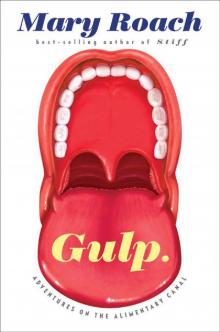 Gulp: Adventures on the Alimentary Canal
Gulp: Adventures on the Alimentary Canal The Best American Science and Nature Writing 2011
The Best American Science and Nature Writing 2011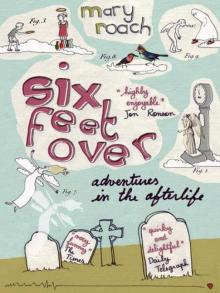 Six Feet Over: Adventures in the Afterlife
Six Feet Over: Adventures in the Afterlife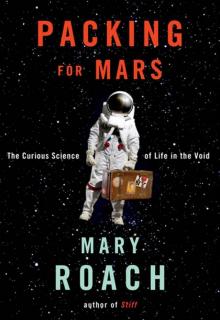 Packing for Mars: The Curious Science of Life in the Void
Packing for Mars: The Curious Science of Life in the Void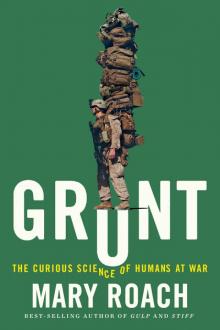 Grunt: The Curious Science of Humans at War
Grunt: The Curious Science of Humans at War